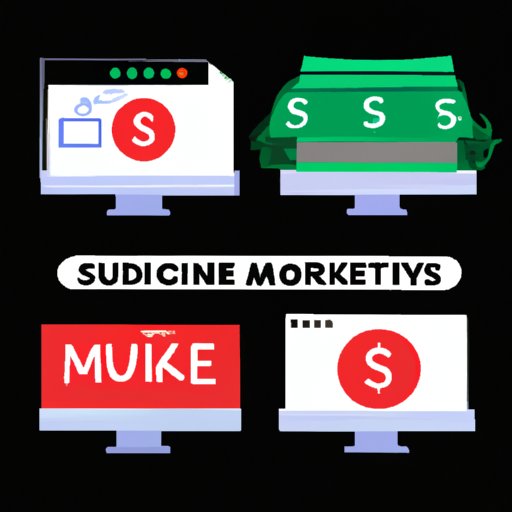
Introduction
YouTube has become one of the biggest sources of income for creators, but getting started and figuring out how to make money can be confusing. One of the most common questions asked is: How many subscribers on YouTube do you need to make money? In this article, we’ll answer this question and many more, providing you with a comprehensive guide to earning money on the platform.
The Basics of YouTube’s Partner Program
The YouTube Partner Program (YPP) is the primary way creators can monetize their content. To join the program, your channel must: have at least 1,000 subscribers, have 4,000 watch hours in the last 12 months, follow all community guidelines and terms of service, and have a linked AdSense account.
While having a large number of subscribers is important, it’s just one of the requirements. Your earning potential is based on various factors, including how engaged your audience is and how many ads are actually viewed.
One tip for building a subscriber base is to create compelling content that aligns with your brand and audience interests, use keywords and tags appropriately, and promote your videos on social media and other platforms.
Focusing on Niche Content
Focusing on a niche topic can help set your channel apart in a sea of content, making it easier to build a loyal audience. Niche content also has the potential to attract advertisers looking to reach a specific audience.
Examples of successful niche channels include beauty channels, gaming channels, and cooking channels. To find your niche, consider your interests and strengths, and research topics that are underserved in the YouTube community.
Ad Revenue vs. Sponsorships
While ad revenue is a primary source of income for many YouTubers, sponsorships can be a lucrative income stream for creators with authentic and engaged audiences. Sponsorships typically involve a partnership with a brand, where the creator promotes a product or service in a video or series of videos.
Pros of sponsorships include higher payouts per video, more creative control, and the opportunity to promote brands you genuinely believe in. Cons of sponsorships include the time and effort needed to secure deals and the potential to appear insincere or damage your brand if not handled properly.
To attract sponsors, it’s important to develop a strong brand, build a loyal audience, and have clear and transparent guidelines for sponsorships. Negotiation skills are also essential in securing the best partnership deals.
Low-Subscriber Count Success Stories
While having a large subscriber count can certainly help with earning potential, it’s not the only factor in success on YouTube. Many creators have been able to succeed with relatively low subscriber counts by focusing on quality content, building a consistent and engaged audience, and promoting their content through various channels.
Examples of successful creators with low subscriber counts include innovators such as Casey Neistat and PewDiePie.
Comparing Earn Rates Between Creators
Earnings on YouTube can vary greatly among creators, even those within the same niche and subscriber range. Factors affecting earnings include engagement, watch time, ad rates, and brand sponsorships.
Strategies for retaining subscribers and increasing earnings include responding to comments and feedback, uploading consistently, and utilizing various monetization options, such as merchandise sales or paid memberships.
To measure and improve audience engagement, it’s important to track metrics such as watch time, views, likes, and shares, as well as other factors such as audience demographics and traffic sources.
Ad Placement Options and Their Impact on Earnings
There are various types of ads available on YouTube, including overlay ads, skippable ads, non-skippable ads, and bumper ads. Some ads may earn more than others, and the placement of ads can also affect earning potential.
Factors affecting ad revenue include the number of views, ad impressions, click-through rates, and geographic location of viewers. While subscriber count can influence ad revenue to some extent, quality content and audience engagement are still the primary drivers of success in this area.
Best practices for optimizing ad placement include placing ads where they are most likely to be viewed, such as at the beginning or end of videos, and creating compelling ads that grab viewer attention.
YouTube’s Algorithm and the Importance of Metrics
YouTube’s algorithm is designed to surface the most relevant and engaging content to viewers. Key factors considered in the algorithm’s ranking process include watch time, engagement, likes, dislikes, comments, and shares, as well as factors such as video age and metadata.
To improve metrics and boost visibility and earning potential, it’s important to focus on creating quality content that is relevant to your audience, using keywords and tags appropriately, promoting your channel effectively, and engaging with your audience in meaningful ways.
Conclusion
Earning money on YouTube can be a rewarding and lucrative career for creators who are passionate about their content. By focusing on building a loyal audience, creating compelling niche content, and optimizing ad placement and metrics, you can increase your earning potential and achieve success on the platform. Remember, it’s not just about how many subscribers you have, but how engaged they are with your content.
Key takeaways from this article include the importance of developing niche content, building audience engagement, and being transparent and authentic in your promotional activities. We hope this guide has provided you with valuable insights and inspiration for creating and growing your own YouTube channel.





